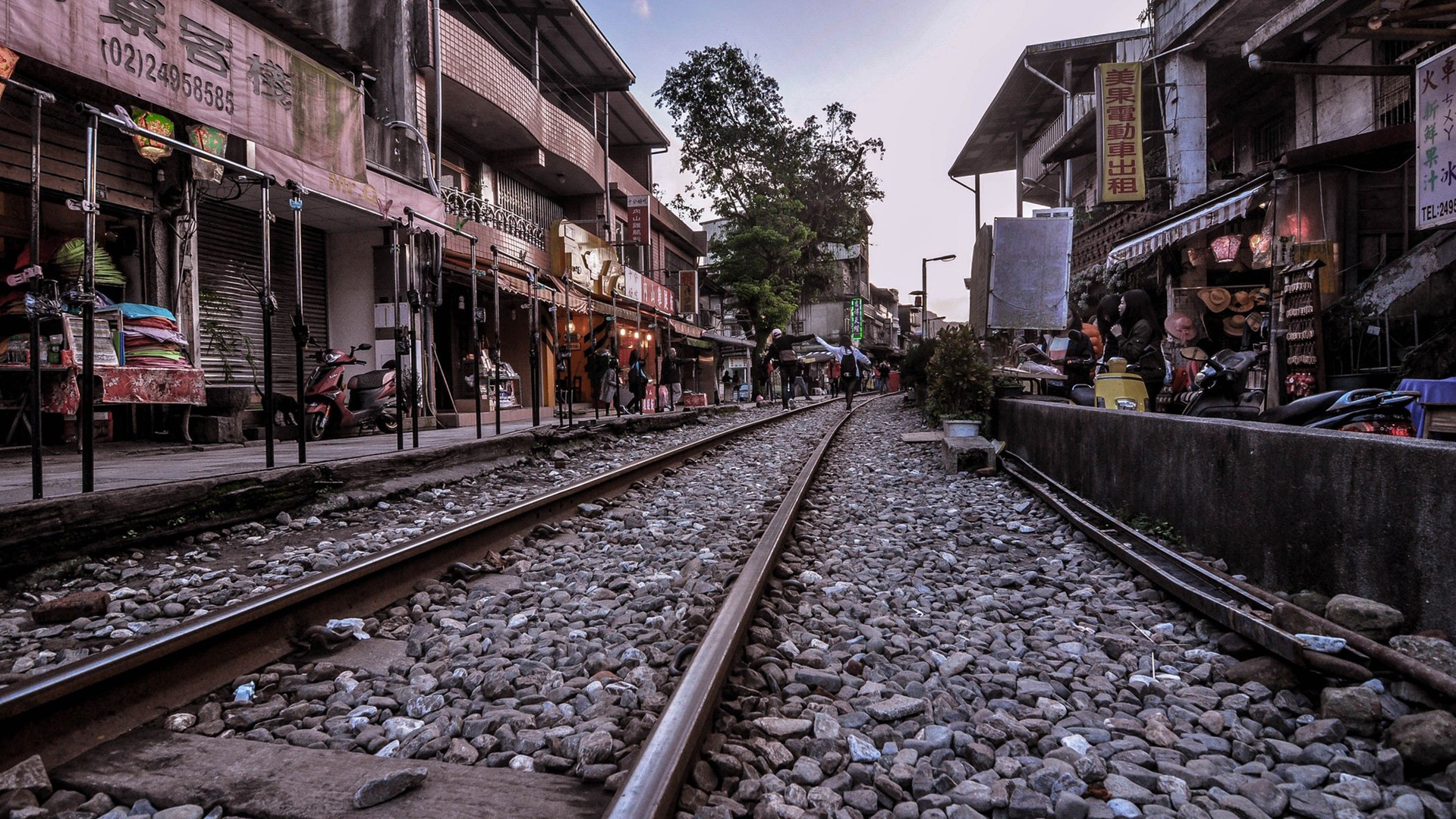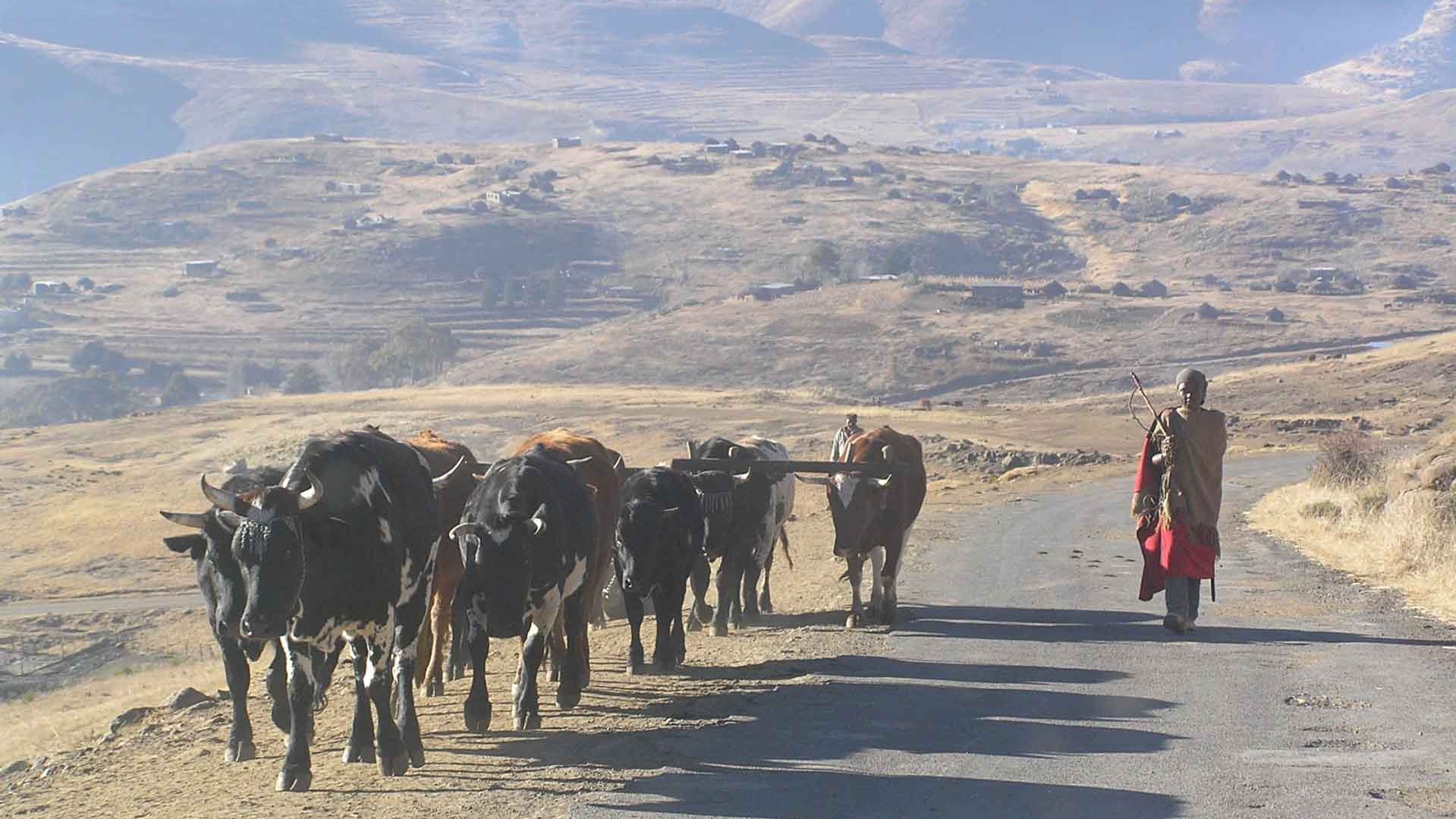Bruce Thompson is the Long-Distance Road and Rail Transport Theme Lead for the five-year High Volume Transport (HVT) applied research programme funded by the UK Department for International Development. In this post, Bruce highlights the urgent need for new research into strategic long-distance road and rail transport across Africa and south Asia.
The UK-funded High Volume Transport programme is funding vital transport research that can improve economic opportunities and livelihoods across Africa and south Asia. The programme is focused on four research themes: long-distance road and rail transport, low carbon transport, urban transport, and gender, vulnerable groups and inclusion.
Roads and railways are vital linkages in flows of imports and exports, particularly between landlocked countries and maritime ports. They are the backbone of national and regional trade, and they are essential for developing industry, trade, and agriculture.
Urgent need for updated road and rail transport research
Road and rail links are also very costly to build and maintain, and they consume a large part of government budgets. This is particularly challenging for low-income countries.
New research is needed to help low-income countries make the right investment decisions, as research standards, specifications, codes of practice, and building regulations need updating, often relying on a blend of national and European standards. New research also has the potential to reduce construction costs so that budgets can be spent more efficiently and effectively.
The High Volume Transport programme funded by DFID is assessing the relevance of current specifications and methods for building road and rail links, how local materials can be incorporated, and new ways to improve maintenance. These represent some of the hard engineering aspects of construction and maintenance. But then there are the perspectives of transport users, the consumers, travellers, and freight operators. How do we reduce their cost of transport? This is through regulation, improving access to transport, and increasing the competitiveness of the road and rail industries.

“Long-distance road and rail transport has been selected as a High Volume Transport research theme area because of the economic integration role it plays in Africa and south Asia.”
Major challenges in Africa and south Asia
Road and rail transport covers vast geographic areas, intrudes into all sectors of government, and affects everyone. In much of the developed world, we take transport infrastructure for granted the minute we step outside our home. We walk on pavements, wait for buses or get in a car, or order whatever we want online and wait for delivery. But this is not the case in many countries.
Affordability across Africa and south Asia is a major issue, and even the purchase of a cycle may be a prohibitively expensive option for many people. Safety is another issue. Road conditions are poor, and traffic regulations are circumvented by corrupt practices, resulting in unsafe vehicles, unlicensed cars, and drivers working overtime.
There is vital demand for better-designed, better-maintained road and rail links, and better regulations for people to be safe in their travel.
Why invest in strategic long-distance road and rail transport research?
Long-distance road and rail transport has been selected as a research theme area because of the economic integration role it plays in Africa and south Asia. It connects agricultural centres in rural areas to urban consumption centres. It also links industrial, manufacturing and mining areas to urban areas and ports. It comprises hard engineering, operation, and maintenance, but also cost reduction, better competition in the transport sector, and better road services.
At the same time, road and rail transport also consumes huge levels of fossil fuels and creates high levels of pollution, so advances in fuel consumption, for instance, will be very positive in reducing emissions.
Will the types of vehicles change in Africa and south Asia as technology moves towards hybrid and electric vehicles? Across Africa and Asia, many vehicles are reconditioned, so any move towards hybrids and electric vehicles would positively impact factors such as emissions and health conditions in urban areas.
But this will create new challenges in terms of maintenance of such vehicles, higher cost of vehicles, and electricity availability in developing countries where power generation is limited. Long-distance road and rail transport is an essential, very current development issue, and it links closely to the other three themes.

We are now engaging researchers to identify transport challenges to be addressed by up-to-date research. This ongoing assessment, including desktop studies and a trawl of available research papers, will be compiled in our upcoming ‘State of Knowledge’ papers validated by stakeholders
Four High Volume Transport research themes
The theme of road and rail transport has clear overlaps with the low carbon theme, for instance, in relation to improvements in fuel consumed by vehicles, improving vehicle maintenance, and updating the age of the fleet of vehicles that circulate in Africa and south Asia by removing older and higher-fuel-consumption vehicles.
In relation to the urban theme: roads and railways often start and pass through urban centres and have an impact on them. For instance, better management of long-distance trucking operations, with ring roads and lorry parks, can minimise impact on urban areas.
In the nineties, there was a focus on getting women involved in transport, though that was seen in terms of involvement in road labour, not policy, not seeing women as transport users, travellers, or traders on long-distance buses and on urban transport.
Only much later were differences in needs realised, not only between men and women, but also among children and users with disabilities. However, this focus has often been project-related, with inclusion not being considered a part of transport sector policy or embedded into institutions that manage and design transport infrastructure and regulate transport.
Major challenges in commissioning transport research
There are so many challenges. One is economic stability in low-income countries. Many are surrounded by countries in conflict, or may be suffering their own conflicts internally. Overarching factors of conflict, peace, security, and politics can greatly impact transport regulations and operations.
Then there is climate change. Flash flooding, extreme drought, and extreme rainfall are of particular concern for non-paved roads. While long-distance roads are generally paved, much of Africa relies on gravel roads that are at much greater risk from weather changes, leading to washouts, potholing, disruptions in traffic, delays in moving goods, and losses of perishable goods. A railway washout 400 kilometres from an urban area can result in days or even weeks of delay.
We know that climate change is increasing the incidence of flash floods, increasing variations in river levels, and threatening infrastructure in low-lying and maritime coastal areas. The transport sector is looking for ways to adapt to changing weather and rainfall patterns so that vulnerable sections of infrastructure can be better-protected, and better mitigation and construction measures can be put in place. These are major challenges for transport sector professionals to consider.

Need for better collection, use of data
Transport costs governments a lot of money, and does not generate revenue like sectors such as mining, agriculture, and tourism. Transport requires major investments and major decisions, and these decisions need up-to-date data, though that data is largely lacking. Data collection and analysis, and monitoring of transport infrastructure and transport patterns is absolutely necessary to improve the investment decisions of fragile transport budgets in cash-strapped, low-income countries.
This is where the Transport-Technology Research Innovation for International Development (T-TRIID) research funding competition within the High Volume Transport programme may lead to new technological ideas that can improve how data is collected more efficiently with drones, mobile phones, cloud computing, data visualisations, centrally managed data is open and available to all agencies responsible for transport in a particular country. In the past, data collection has been programme-led rather than on a sector basis and survey basis. This is a critical challenge.
What’s coming up in High Volume Transport
We are now engaging researchers to identify transport challenges to be addressed by up-to-date research. This ongoing assessment, including desktop studies and a trawl of available research papers, will be compiled in our upcoming ‘State of Knowledge’ papers validated by stakeholders, which will conclude Part 1 of the programme.
In Part 2 of the programme, we will commission that research, connecting with universities and research centres in low-income countries. I am interested to see how our programme develops relationships with these research organisations. These organisations will then engage ministries of transport, ministries of finance, ministers, and senior officials in the public and private sectors to adopt the research findings into road and railway transport operations. This is the big challenge. Part 2 is the practical, exciting part of the programme. For the low-income countries that we will focus on, and for DFID, Part 2 will be the real learning period.
Bruce Thompson is a Chartered Civil Engineer who has specialised in development cooperation in the private and public sectors. He has over 35 years of experience in managing a broad range of infrastructure projects. His experience of living and working in Barbados and Kuwait, and in EU Delegations in Trinidad and Tobago, Zambia, Kenya and Tanzania enable him to work in a multicultural and multidisciplinary environment. This wide experience led to him becoming Head of Infrastructure Policy for Development Cooperation at EC headquarters, Brussels. He now practices as an Infrastructure Policy Adviser.

